You can photograph the usual sights or some beautiful buildings, but how do you show the character of a city or town in your photos?
Page Contents (click line to jump the text)
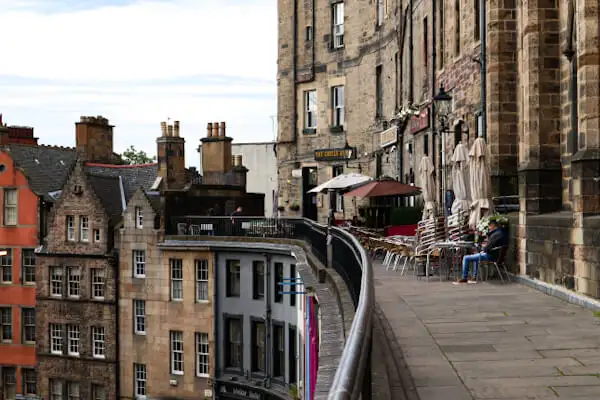
Intro
I have often asked myself this question while travelling. I’m still looking for the answers…
Thank you for your attention.
No, I’m joking, of course it continues, because the journey is the destination! The journey within the journey, so to speak – on which I will now take you:
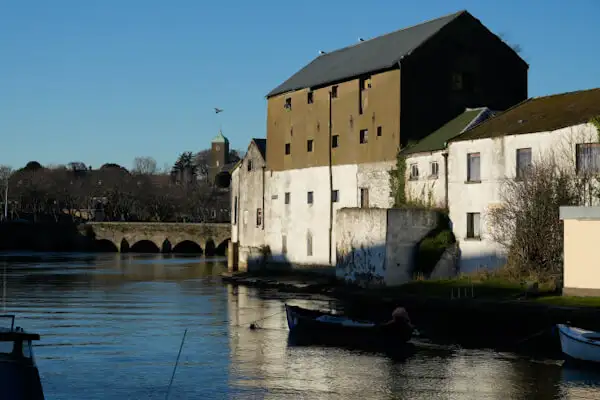
There are city people and there are country people. I’m more of a country person. But I am also fascinated by beautiful cities and places. At least for a few hours. Then, at the latest, the sensory overload catches up with me again: Too much traffic, too many people, too much everything.
I don’t spend much time in big cities. But when I come to a city with a historic town centre, I look forward to exploring it. With all my senses (until the sensory overload sets in…)
I usually do a bit of research beforehand: Where do I want to go, which sights do I want to visit and which places do I want to see. But once I’m out and about, I also like to let myself drift. I let the ‘vibe’ of the city work its magic on me, observe the hustle and bustle around me and take lots of random photos.
But there is usually a bit of a plan: I want to photograph important buildings, important sights, some from the inside, I want to get an overview and also capture details and I want to photograph the people who breathe life into this city.
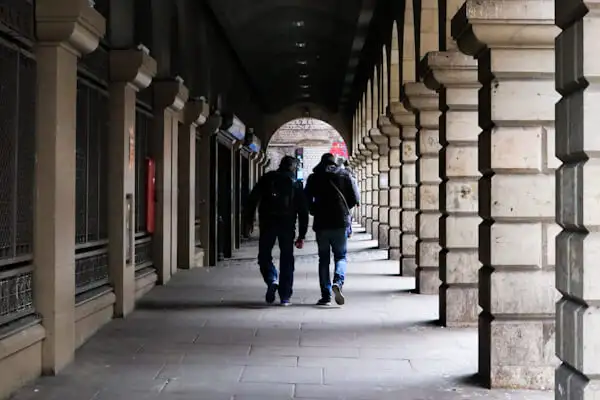
Small disclaimer: I’m a hobby travel photographer, like you probably are, and I’m always learning something new. Just take a look at my photos and decide for yourself what you like or don’t like so much.
Now we’ll get to how planned and spontaneous photography of a city can look for you:
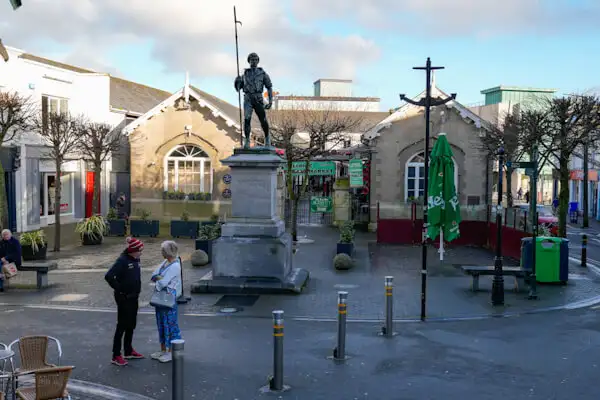
What is street- or city-photography?
I looked at the pictures of many street and city photographers and realised that there are many very different styles. Some photograph the architecture, others the people, and others work more with abstract images of light, form and colour. With some of them, you can no longer recognise where the picture was actually taken.
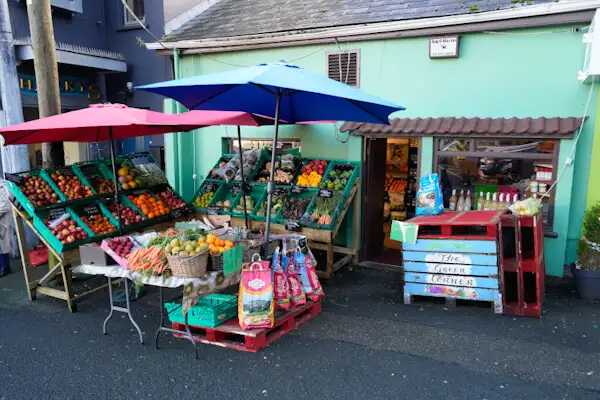
In my own definition, street photography is more about life on the streets. Architectural photography deals with buildings. City photography ultimately brings the two together. So let’s just say it’s about the city itself and life in the city.
Ireland doesn’t have many cities, most of them are medium-sized or small towns. But of course you can do city and street photography there too. In principle, it works in the same way in large and small cities.
Photographing landmarks and architecture
I’m a general amateur travel photographer and certainly not an accomplished architectural photographer. But when I look at my pictures, I take a surprising number of photos of historic buildings in old city centres. Because I simply like them!
A few basic rules (which I often don’t follow myself…):
Take a super wide-angle zoom with you and try to get buildings either full-frame all the way into the picture, or concentrate on detailed views. An almost complete church without a tower doesn’t look good.
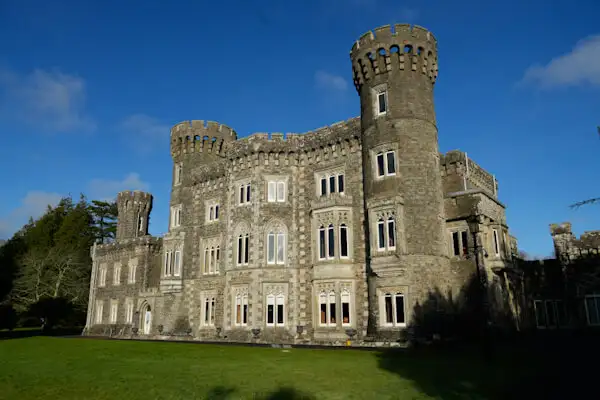
Your pictures will have falling lines at the sides. Towers then appear to tilt towards the centre of the image. This doesn’t bother me so much, but it’s cleaner to correct the geometry afterwards in Lightroom or other post-processing software. To do this, you have to capture everything as far as possible because you will have to crop the image considerably when correcting it.
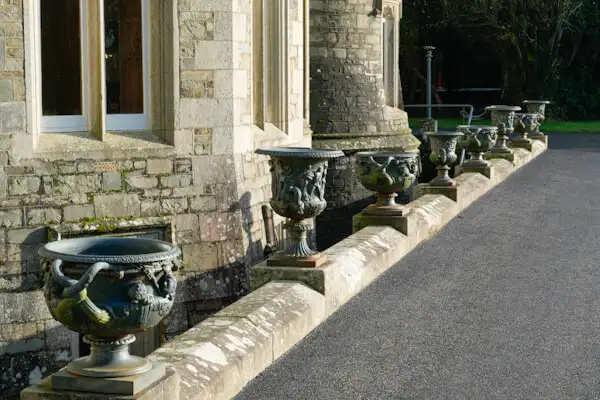
Search for geometry: for example, the row of houses runs diagonally through the picture, the two wings of the castle are exactly opposite each other in the picture, the town hall is reflected perfectly horizontally (mirror axis) in the pond and you are standing exactly in the centre in front of the building. We humans like to see geometry, it’s satisfying. A few geometric images in the picture gallery are a safe bet.
Photograph intuitively: This is exactly the opposite: photograph the skyscrapers from diagonally below, hold the camera at an angle, find angles that are not perfect and see if you can get tension into the picture. Climb up the observation tower or church tower and shoot from the top down, place the camera around the ground and shoot upwards, or shoot from the hip.
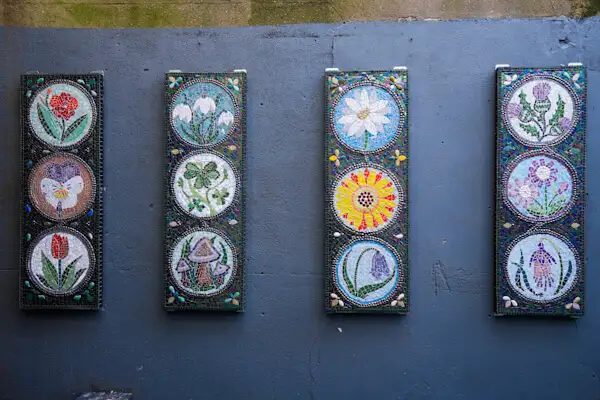
Find interesting details and concentrate on them: The gargoyle on the cathedral, the bay window on the town hall, the ornate wooden entrance door or the antique street lamp.
If you can, try several views of the same object: an overview, close-ups from different angles and a few detailed photos. Afterwards you can choose which of these you want to use.
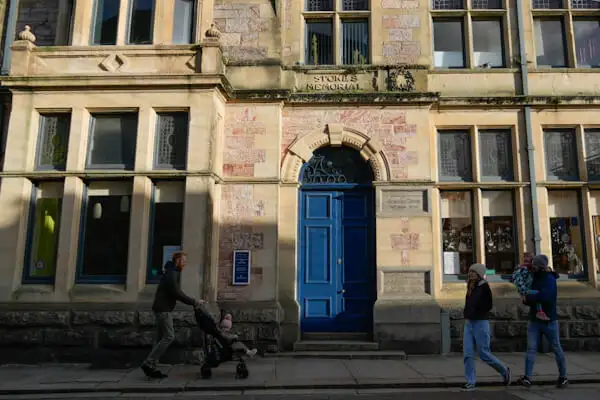
Also take photos from the inside: The castle from the inside, the exhibition, the church or the museum – if you are allowed to take photos there.
Look for light and colour: take photos in the early morning or late evening when the light is softer, capture the reflections of the clouds in the glass façade, look for colourful accents in the architecture.
Incidentally, you can also photograph a monument against the light, similar to a portrait. A fountain can also be beautifully backlit when the light makes the water droplets glow.
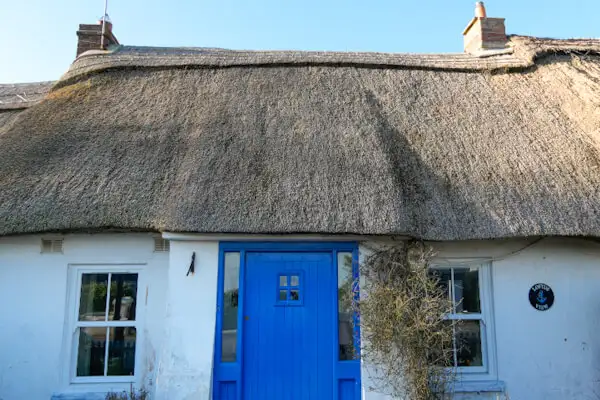
Taking in the scenery
Only recently have I been trying to include more people in my pictures. Because a city without people is lifeless. And pictures of buildings have their own aesthetic, but if I want to tell a story about a city, then at least some of my pictures should also show people.
A beautiful market square only really comes to life when there are market stalls and hustle and bustle. Market women and men, shoppers and lingerers. They are part of it.
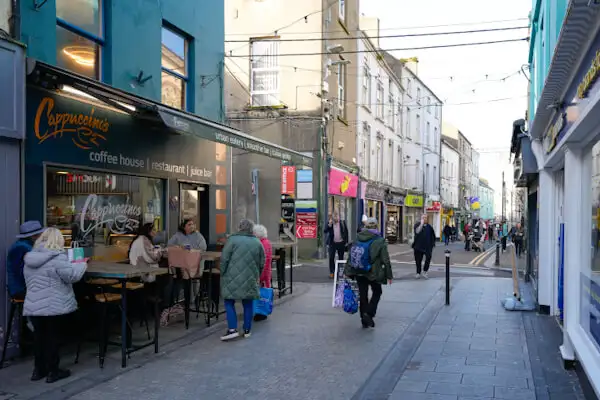
The fishing boats in the old harbour come to life when traps are loaded, boats come in or go out and people work on lines and nets.
The historic town hall square with its restaurants and cafés deserves people to linger and enjoy their time there.
Deep shadows lie over the narrow streets of the old town. In the small sunny spots and squares, pigeons look for their breakfast, people wander through the alleyways and a dog strolls along the path, followed by its human. A cyclist rolls through the light and suddenly everything is empty again.
The streetscape also includes the old books on a stand in front of the bookshop, the flowers in their hanging baskets, signs and lights, colourful facades and other details that can make up this place.

Let the surroundings have an effect on you and listen to what makes this place so special. And then you’ll know what you want to photograph!
It’s probably a combination of all these impressions.
Photographing people in the city
I still find it a bit difficult to take photos of people and probably many people do. But I’m practising and getting a little further along in the process every time.
Before you start, you should enquire about the legal situation in the respective country. In Ireland and the UK, you are generally allowed to take photos in public, but only with permission on private property. But regardless of this, not everyone likes to be photographed and we should all be considerate of this.
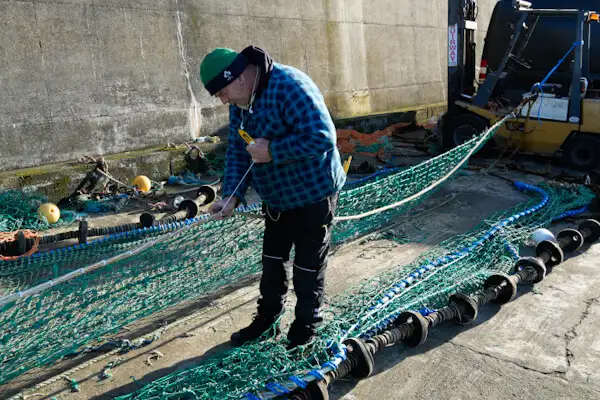
My experience is that if you’re in a city with lots of people in the street and people happen to walk through the picture, nobody usually has a problem with it. If you point your large telephoto zoom at a single person, it will be noticed and not always appreciated.
If you want to photograph individual people, you can also ask them. It’s best to have a little chat with them and then ask. If they say no, at least you’ve asked – and maybe they’ll feel flattered and say yes! That’s a bit like a city portrait.
Many street photographers have no interest in this and tend to take pictures of people casually. With an inconspicuous camera and a small, inconspicuous lens that is not immediately perceived as a threat. There are two techniques for this, ‘reacting’ and ‘waiting’.
When ‘reacting’, I go for a walk, notice interesting scenes and photograph them intuitively, often while walking. I use the camera screen rather than the viewfinder.
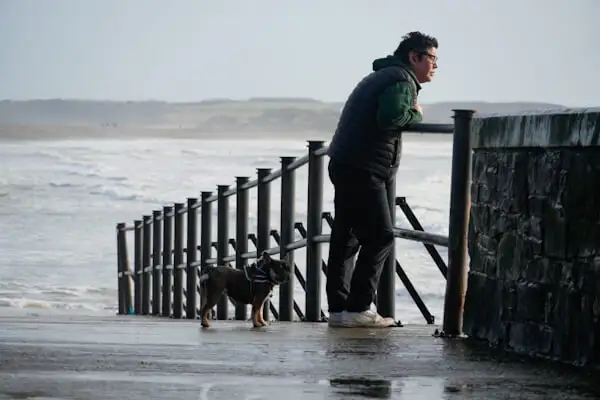
Many of these photos are of little use afterwards, but some are good. That’s because some things just happen so quickly, some scenes play out before my eyes in seconds. Especially when people are involved.
Simply listening to your instincts and ‘shoot first and think afterwards’ helps to train your eye and reflexes. Example: A cyclist dressed in blue rides past a house painted yellow (colour contrast).
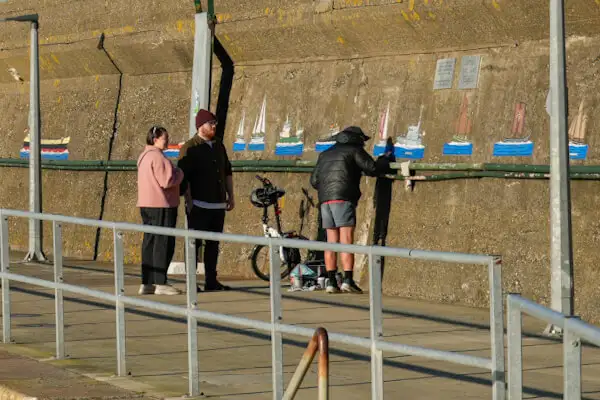
When ‘waiting’, I look for a beautiful scene that repeats itself. For example: long statues lie across the alley. Some light falls on a small square where people keep walking through.
I can take my time to find my perspective and framing and simply wait until people walk through. Again and again, until a few pictures have turned out well.
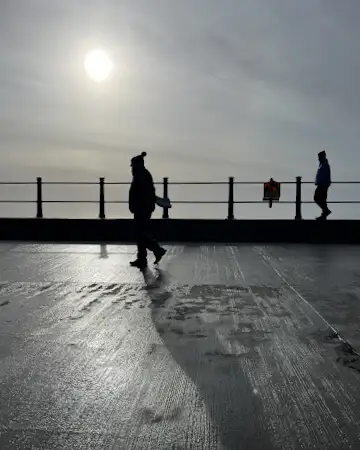
Lights and colours of the city
I’ve already hinted at it: when I walk through a city, I look for light (and shadows) and I look for colours. I also look for contrasts or reflections.
I don’t mean actively looking, but simply keeping my eyes open.
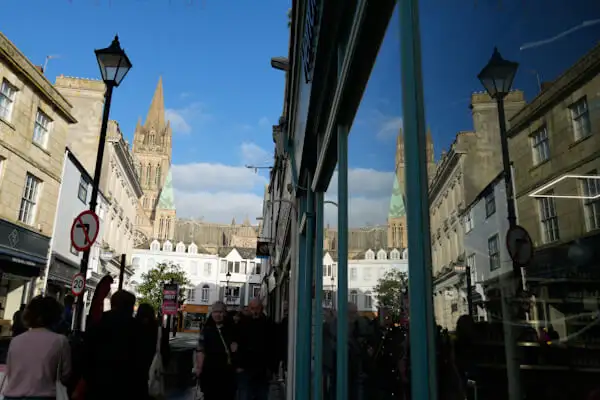
You can take beautiful pictures with these elements: A beautiful building is a beautiful building. It becomes even more beautiful with people in front of it, a coloured façade and soft light that brings out this colour. If the building is yellow, for example, people dressed in blue or red look very good in front of it. This creates colourful points of contrast that are interesting for the viewer.
Shadows and light in an alleyway are a good example of a picture with strong contrasts. The same goes for a statue against the light, silhouettes of people or light and shadow that emphasise the geometry of a building.
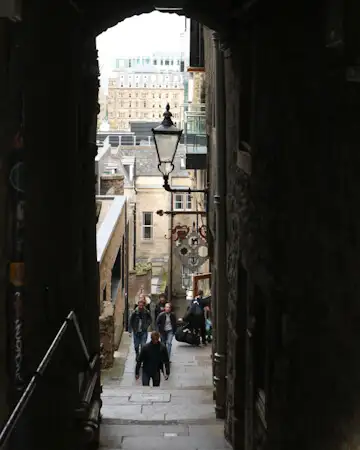
Exciting reflections can be found in calm waters, for example, but also on wet streets, in puddles or in reflective facades and shop windows.
If you are out and about in the evening, pay attention to the coloured lights of the city and include them in your pictures.
Image composition at the city
Cities can be a bit like landscapes, at least photographically: you will usually shoot with a more closed aperture (8,11,16) to get the foreground and background sharp. You can use leading lines and geometry, you can work with wide angles and foregrounds or use the telephoto zoom to compress a street and emphasise details. You can take photos in the golden or blue hour and you can shoot your objects from different perspectives.
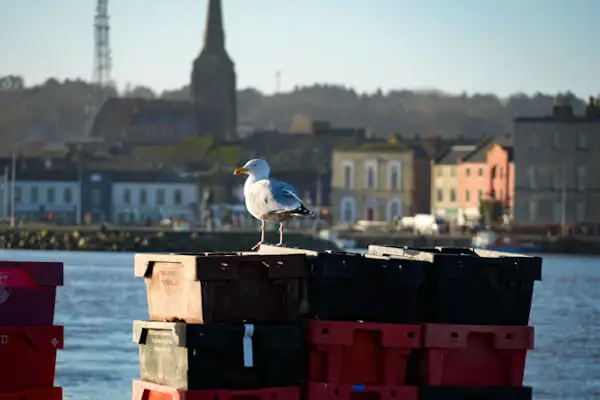
You don’t necessarily have to work with an open aperture in street photography either. But you can. If you want to emphasise people, you can blur the background a little with an open aperture (2.2.8.4). Just a little, otherwise you will lose sight of the context, namely the city and how this person is moving.
You can also concentrate even more on people, take street portraits and mainly bring the people in their surroundings into the picture.
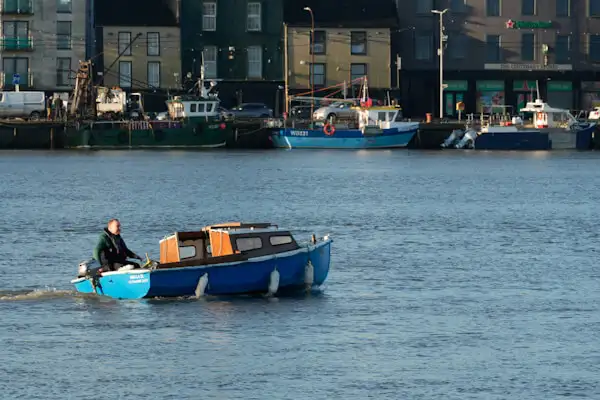
Selfies and the personal touch
In the age of social media, I hardly need to explain this: Of course you can take a few selfies with easily recognisable landmarks in the background (Eiffel Tower, Big Ben, ….). And of course you can also take a photo of your food or yourself having a coffee in the piazza.
I’m pretty bad at this myself, but you can of course round off your personal photo gallery with a few personal photos.
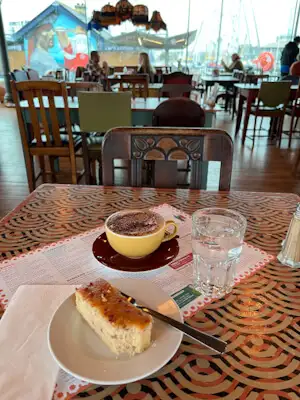
Bringing the story together
I’ve already used the term photo series: This refers to a selection of your many photos with which you want to express the history of the city or your journey in the city.
How and to whom you want to show your photo story is up to you: A few photo carousels on Instagram or Facebook, a blog post (like on my travel blog), a photo collection to the Whatapp group or a printed photo book as a souvenir of your holiday.
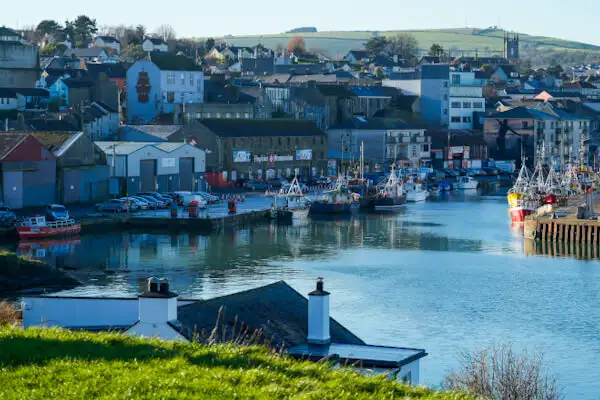
If you now have a nice selection of photos, of sights, buildings, people, details and personal photos, then you can tell a very varied and interesting story about yourself and this great city.
And if you’ve always wondered what to photograph on holiday? Then just think about it before you go – what do you want to be able to show after your trip? Then you can give yourself your own photo assignment!
Conclusion
Cities can be fascinating and offer a wealth of attractions. Ultimately, however, it’s about the buildings and sights and the people who fill these cities with life. So it’s about architecture and street photography, or as I would call the combination: city photography.
You can decide for yourself what your city photography should look like. And you can also decide for yourself what your photo series, i.e. the quintessence of your photography in this city, should look like.

I’ve given you a few tips on which elements to include and how to capture them to help you on your next trip.
I hope you enjoy your street, architecture and city photography and have lots of fun on your next trip!
More interesting articles for you
Traveling landscape photography – basics
Black and white travel photography
Better travel photos in poor light
ZEN – OR THE ART OF TAKING A GOOD TRAVEL PHOTO
Cover picture: Street life in Edinburgh (Photo: Ulrich Knüppel-Gertberg)